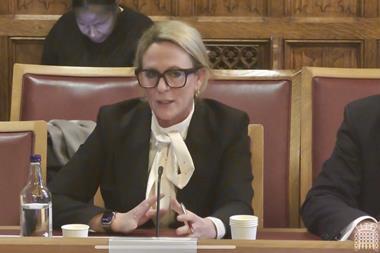Use of technology could generate $200bn more margin and help improve combined operating ratios. Companies that fail to take advantage of blockchain could fall by the wayside
If your company isn’t looking at blockchain technology right now, look for a new employer.
So says Willis Towers Watson senior economist Magdalena Ramada Sarasola, who recently told an insurance industry conference in New York: “If your employer is not looking at this seriously now, your company will not exist in three to four years. You should find a new job now.”

Blockchain technology has the potential to fundamentally change the nature of insurance if the industry can harness its power. It could also allow the peer-to-peer insurance model to flourish and help to cover under-served markets cost-effectively.
A recent report from Boston Consulting Group (BCG) estimates that, globally, property/casualty insurers could generate $200bn more in technical margin from the current level of growth in written premiums through blockchain use. In addition, it says that the technology could help reduce combined operating ratios by between five and 13 percentage points.
According to the BCG report, there are several barriers preventing wide-scale blockchain adoption. These include unfamiliarity, technical challenges, concerns over security and the need to find the right partners to develop applications with.
It will also need to overcome legal and regulatory hurdles to become an industry standard.
But BCG warns that it would be a mistake for insurers to hold back on the technology.
The insurance industry is beginning to make advances in the use of blockchain as demonstrated by the recent announcement of Insurwave. This new global marine platform was developed by (re)insurers XL Catlin and MS Amlin, with broker Willis Towers Watson, EY, Microsoft and ACORD.
EY predicts the new platform will support more than half a million automated ledger transactions and help manage risk for more than 1,000 commercial seagoing vessels in the first year. A P Moller-Maersk contributed to the development of the blockchain technology as a pilot client and is continuing on the platform with its hull portfolio.
“With this blockchain, we are bringing together – for the first time – all the parties of the insurance value chain on a single platform,” says Martin Henley, XL Catlin chief information officer.
“Ultimately, through the use of Internet of Things (IoT) and smart contracts, policies will be updated automatically to reflect the risks covered, and this combination of technologies will help improve efficiency in claims assessment and payment.”
Development spending grows
According to market intelligence company International Data Corporation, £16bn has been spent on blockchain solutions globally so far this year, with more than two-thirds of banks now developing platforms.
The (re)insurance industry’s blockchain initiative B3i was launched in 2016 and counts Aegon, Ageas, Hannover Re, Liberty Mutual, SCOR, Tokio Marine Holdings, XL Catlin and Zurich among members.
Ken Marke, chief marketing officer at B3i, says that for every insurer known to be working with blockchain there are probably nine others “and the reason you don’t know about it is because it’s commercially sensitive.
“There’s a lot more going on behind the scenes. A lot of that is going on in innovation teams or in labs and the business itself is not really being educated that much.”
He continues: “The phrase I use is #outofthelabandintothebusiness. We do need to educate the people in the insurance companies more about the potential of blockchain in a simplistic way. Then they can start to think about which problems it can help to solve.
“We’re now at a point where we’ve learned quite a bit about blockchain, so let’s go out and explain to people how we can help solve problems.”
According to Marke, blockchain does several things:
- It is a shared ledger with cryptography. That makes it more secure than other shared applications, such as Dropbox.
- It enables smart contracts – contracts that self codify.
- It is immutable. So, as blocks are added they can’t be changed, altered or erased, providing a complete audit trail.
Blockchain has a consensus mechanism – so everyone in the network agrees with the changes.
They are then validated, which creates trust and contract certainty.
Last year B3i completed its first product, a blockchain prototype for property catastrophe excess of loss (XoL)reinsurance contracts.
The prototype demonstrated that transactions could become quicker, more efficient and more secure than with current methods. The first live trades on the platform are expected by end-2018.
Marke says: “At B3i we’re started on the B2B road with reinsurance and insurance. When you’re trying to prove a new technology works and how to do it, you don’t want to complicate it with millions of transactions.
“In a reinsurance contract for catastrophe XOL there might be one claim a year and that’s easily manageable when you’re trying to create a new technology platform and product.
“We are testing the technology to show that it can remove a lot of friction and manual work from the process. The problem with reinsurance is that there’s a lot of manual reconciliation going on. A blockchain smart contract can remove that, and you can save costs in the value chain and it becomes quite compelling.
“We can build up the complexity and somewhere in the future we’ll arrive at the mass market of retail insurance.” ν
Hosted by comedian and actor Tom Allen, 34 Gold, 23 Silver and 22 Bronze awards were handed out across an amazing 34 categories recognising brilliance and innovation right across the breadth of UK general insurance.




















































No comments yet